 6
6

Big Pyramid as a mathematical model
 16. 04. 2024
16. 04. 2024



 6
6

 16. 04. 2024
16. 04. 2024
 8
8

 15. 04. 2024
15. 04. 2024
 1
1

 1
1

 13. 04. 2024
13. 04. 2024
 3
3
 03. 01. 2023
03. 01. 2023

Piles of sand found in the Egyptian desert using Gogole Earth appear to be long-lost pyramids. Last year, the American archaeologist Angela Micol identified two areas that are more than 145 km away from the current Nile. Both areas contain hills with a very unusual shape.
Some archaeologists have previously rejected the idea that it could be a pyramid. A preliminary study from the present, using ancient maps, suggests that the considerations might in fact be correct.
Micol discovered her at home in North Carolina last year (2013) when she combined several photos from Gogole Earth. The discovery was supported by the report that near the selected sites, previously unknown spaces (cavities?) And shafts were discovered during preliminary surveys. This reconnaissance site is located 12 km from Abu Sidhum, close to the Nile. This area contains 189 meters wide triangular plateau, which is nearly three times larger than the Great Pyramid in Giza. This sounds very interesting because it would probably be the largest pyramid discovered on the African continent. Micol also discovered that the discovered formations are on many ancient rare ancient maps named as pyramids.
This extraordinary discovery has been criticized by many archaeologists and geologists, who have been utterly skeptical of the idea that a tool like Google Earth could actually discover something. Most of them strictly stated that these unusual hills, or weathered rock formations, are quite common in the local desert.
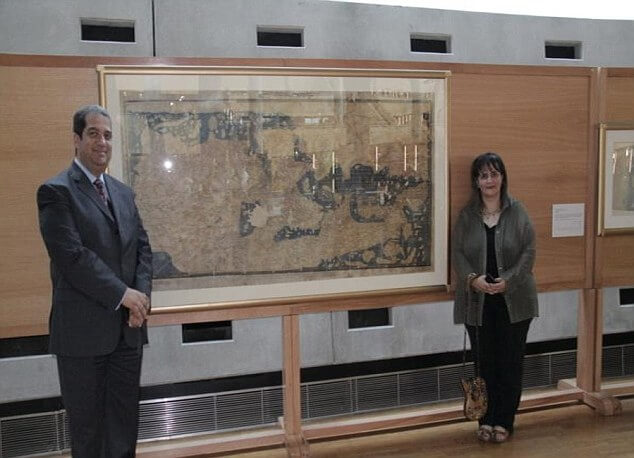
Historical maps
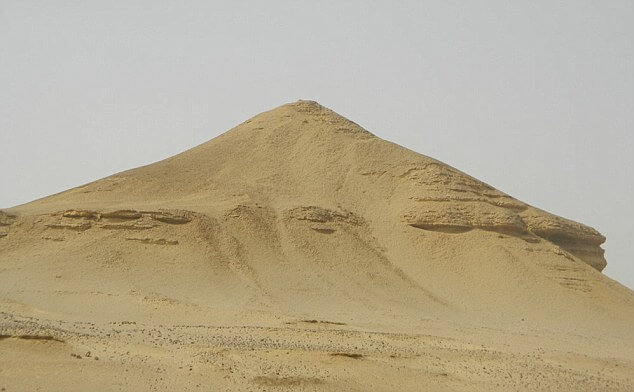
Pyramid in the desert
Micol said: "After the initial uproar, I was contacted by an Egyptian couple who claimed to have important historical documents relating to both places."
Medhat Kamal El-Kady, former ambassador to Oman, and his wife Haida Farouk Abdel-Hamid, a former adviser to the Egyptian president, said the formations discovered by Micol had been referred to as pyramids on several ancient maps and documents they had in their private collection. . Both told Discovery News that they had 34 maps and 12 other documents created by scientists that support Micolino's claim. One archaeologist also identified another group of possible pyramids near the Fayum oasis, and according to the three maps available, it was estimated that four more hills could hide more treasures.
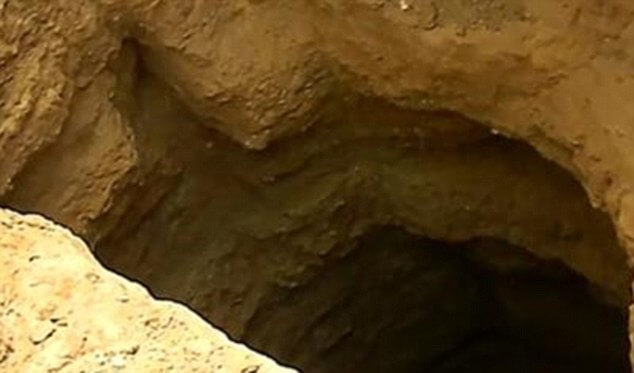
Found shafts at the pyramid in the desert
One of these maps was drawn by an engineer from a group of scholars around Napoleon Bonaparte. The couple said, "It could be the largest pyramids of the world. We probably will not exaggerate if we say that the find could overshadow the Pyramids of Giza. "
Their documents suggest that the pyramids at Fayum Oasis were deliberately buried beneath the mountains of sand to escape attention (were they forgotten?) Over time. Unfortunately, the site has not yet been studied in detail by archaeologists. Mohamed Aly Soliman was the leader of the first reconnaissance expedition to places near Abu Sidhum. He said that the surrounding hills are made of different layers of materials that do not occur in the surrounding landscape. This in many ways suggests these hill had to be created artificially and the material had to be transported here. For Fox News, he also said that local indigenous people suspect that these mounds are hiding ancient secrets at this time.
Another video with event reporting for The Weather Channel.
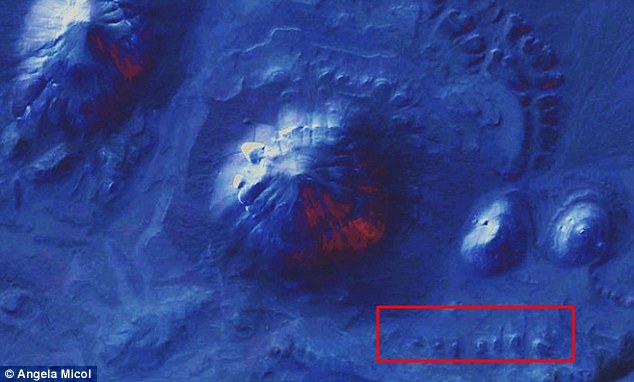
Another pyramid formation
Many years ago, the group around Muhammad Aly Soliman tried to dig in one of them hills. But the stone was so hard that they came to the conclusion that it must be granite. Soliman said directly: "The discovery of strange cavities and a metal detector that we successfully used on the hills led us to the idea that it could be a pyramid." He said detectors identified an underground tunnel that faces north of the two large mounds. It could be the entrance. Micol also said that an Egyptian team identified a temple and a number of possible tombs near the pyramids.
To fund further research into this mysterious area, Micol founded the Satellite Archeology Foundation and launched (in 2013) crowd funding campaign. She hopes to make a trip to Egypt with a team of American scientists. She wants to prove what she found on her computer that it is a complex of ancient pyramids.
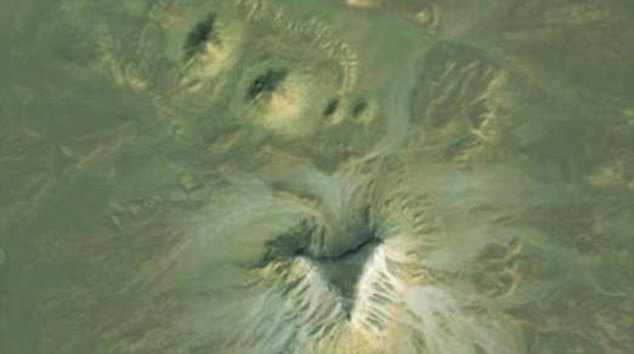
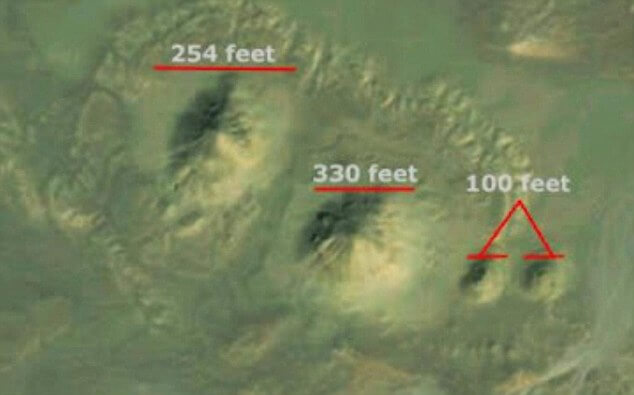
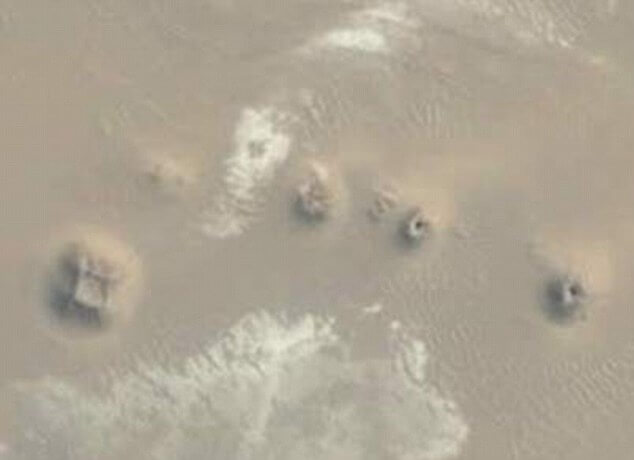
If the area, 20 km from Abu Sidhum, actually contains the remains of the pyramid, then it should be the largest pyramid ever found. Micol, shortly after his discovery last year, said: "After closer examination of the formation, it has been shown that one can have a very flat peak and a generally triangular shape. The entire building is heavily eroded by the influence of the time. "
 The second site is 145 km north. There is a section with a square base of 189 meters. "This second site has a square center (square?), Which is totally unusual for the area. When looking at the hill from above, it has a nearly pyramid shape, "Micol said.
The second site is 145 km north. There is a section with a square base of 189 meters. "This second site has a square center (square?), Which is totally unusual for the area. When looking at the hill from above, it has a nearly pyramid shape, "Micol said.
When Micol had an interview with Sky News last year, she said that there were also three smaller hills (mounds?) In the site, which have a similar layout to the pyramids on the Giza plateau. "The photos speak for themselves. It is clear what these places should contain. However, fieldwork is needed to clearly confirm that these are pyramids. "
Both sites are very important because most of the famous pyramids were built around today's Cairo. The new deposits are much further south.
This is not the first time archeologists had hemlock thanks to Google Earth. In May 2011, the American Egyptologist Dr. Sarah Parcak identified 17 lost pyramids. Micol also used the program to discover a flooded city near the Yucatan Peninsula in Mexico.
[Hr]
Sueney: An interesting insight is the skepticism of Egyptologists, who claim that it is not unusual in a given location. If we take their words into consequences, then it would mean that the entire desert is littered with the ruins of a pyramid of ancient civilization! Apparently in the past, it had to be something quite common, which was built on a running belt for a not quite obvious purpose.
It is also worth mentioning that the pyramids in Bosnia have been shaking for a long time. Their age has so far been dated to at least 25000 years ago. But there is reason to believe that they may be much older. For the Bosnian pyramid of the Sun, the approximate dimensions of 439 meters are the edge of the square base and the height is 220 meters. This means that it is the largest man-made structure so far, even compared to the discoveries made by Angela Micol and her friends.
Source: Dailymail.co.uk